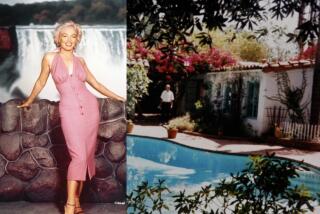Electing to live like a president
John McCAIN doesn’t know how many houses he owns, but he wants 1600 Pennsylvania Ave. Ever since the “presidential palace” was completed in 1800, the White House has been the ultimate American address. For a century it was our largest house, more than double the size of Monticello and Mount Vernon combined.
Before Jacqueline Kennedy enshrined it as an hommage to the founding fathers, presidents and their wives struggled to make the White House home. First ladies were clueless about decorating its dozens of rooms; the 3,200-square-foot East Room was so big it didn’t get finished until war hero Andrew Jackson crossed the threshold in 1829.
By 1900 nationalism was on the rise. Its champion Teddy Roosevelt changed the name of the Executive Mansion to the White House and in 1903 renovated the landmark. Patriotic Americans building new homes thought, “If I can’t own it, I’ll build it.”
From the East Coast to the West, homes with White House aspirations went up at all prices. In 1915, Sears, Roebuck introduced its $5,000 mail-order Magnolia house, a pillared, white mini-mansion. In 1939, heiress Grace Toof built Graceland with a columned entrance at the end of a sweeping Memphis drive, fitting for what later became the home of Elvis Presley, the first man of rock.
This was the era of the Colonial Revival, and though some people believe it ended with the 1950s ranch house, others think it never ended -- nor should it. Forget Frank Gehry, give us Thomas Jefferson.
Here in Southern California, conservative home builders brought the authority of the old East Coast to developments of the new West. One of these men was Roland P. Bishop. He came to L.A. from Ohio on the crest of the 1885 boom and built Bishop & Co., a powerhouse confectioner he sold to the National Biscuit Co. (Nabisco) in 1930.
Bishop was a regional promoter through the Chamber of Commerce and a member of all the right men’s clubs. Like many insiders, he married well. His wife was Dorothy Wellborn, a judge’s daughter and sister of Lillian Wellborn, who married oilman turned developer Burton E. Green.
It’s not surprising that after Green and his partners founded Beverly Hills in 1906, Dorothy and Lillian built neighboring manses on Lexington Road. The Greens opted for a Tudor manor with touches of Scottish castle, while the Bishops turned 6 acres into what the neighbors called a “colonial estate.”
For three years, Roland and Dorothy lived in a bungalow at the new Beverly Hills Hotel while architect William J. Dodd oversaw construction of the Bishops’ very own White House. The Bishops built in wood, granite and brick. Brick was a wonder product: fireproof, affordable, the effect part Betsy Ross, part Independence Hall. It also was made locally -- by skilled Latino adobe-block craftsmen who lived and worked in slave-yard conditions east of downtown.
Six massive white columns and a roof balustrade gave the Bishop house the presidential look, but the topper was the Stars and Stripes flying from the roof, a White House tradition since 1885. San Francisco-based Winifred de Wolfe, whose sister Elsie is often credited as the nation’s first professional interior designer, decorated the 20 rooms. The Bishops terraced the grounds and built a pergola west of the house.
Every mansion needs a name, and with pink-colored bricks and roses in the garden, the Bishops anointed theirs Rosewall.
Whether McCain or Barack Obama wins in November, they both know that stays in the White House are brief. The Bishops had one four-year term before selling Rosewall in 1920, reportedly for an extraordinary $200,000. The buyer, Irving Herman Hellman, was a member of L.A.’s first family of banking and a relative of New York’s Lehman brothers.
Hellman replaced the gardens and decided to add a swimming pool. When his new gatekeeper’s house blocked a neighbor’s view, the Beverly Hills Battle of Lexington began. Grace R. Burt sued Hellman and his wife, Florence, all the way to the state Supreme Court. The Hellmans won.
Rosewall fell to the wrecker’s ball and subdivision after Roland Bishop died in 1950. At the time, he was living with Dorothy where the story began decades before -- in a bungalow at the Beverly Hills Hotel.
--
More to Read
Sign up for Essential California
The most important California stories and recommendations in your inbox every morning.
You may occasionally receive promotional content from the Los Angeles Times.






